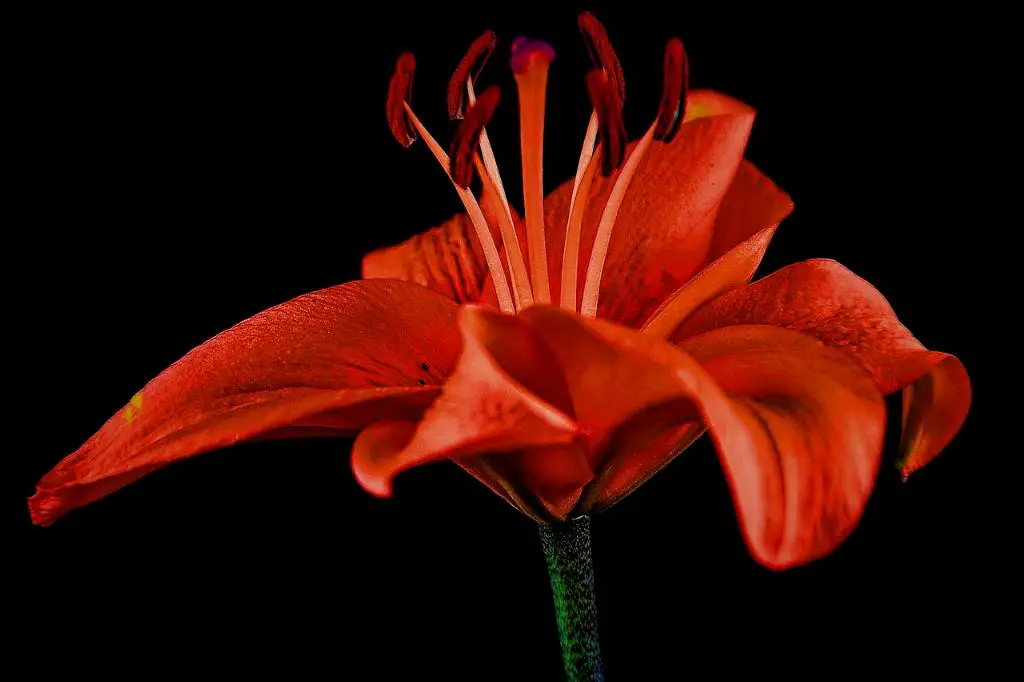Once your lilies have finished flowering, it’s essential to take proper care of them to ensure their health and vitality in the seasons to come. One option you have is to re-pot your lilies in the autumn when the foliage dies down. This is an excellent opportunity to refresh the soil and provide your lilies with the nutrients they need to thrive.
If you decide to re-pot your lilies, make sure to choose a well-draining potting mix and provide ample room for the bulbs to grow. It’s recommended to transfer the bulbs to the garden if you have the space, as lilies tend to perform exceptionally well when planted directly in the ground.
For those who prefer to keep their lilies in containers, it’s possible to grow them for a second season in the same pot. However, it’s crucial to replace the top layer of compost with fresh soil. This not only gives the bulbs a fresh start but also ensures they have access to essential nutrients for robust growth.
When refreshing the compost in your lily pots, consider adding some fertiliser or well-rotted manure to boost the nutrient content. This additional food source can help support the bulbs as they prepare for their next flowering season, promoting bigger blooms and healthier plants overall.
It’s worth noting that lilies grown in larger containers may benefit from the extra space to develop their root systems. Providing ample room for growth can result in more extensive and healthier plants, as well as increased flowering potential in the future.
While maintaining your lilies in pots after flowering, be sure to monitor their water needs carefully. Lilies prefer a moist but well-draining soil, so it’s essential not to overwater them. Establishing a watering routine based on the plant’s needs can help prevent issues such as root rot and fungal diseases.
As your lilies continue to grow, keep an eye out for any signs of stress or disease. Yellowing leaves, stunted growth, or pest infestations may indicate underlying issues that need to be addressed promptly. Taking proactive measures to address these problems can help preserve the health and beauty of your lilies.
During the growing season, consider providing your lilies with a balanced liquid fertiliser to promote healthy growth and flowering. Fertilising your lilies regularly can help ensure they have access to the nutrients they need to thrive and produce vibrant blooms.
In addition to fertilising, deadhead spent flowers to encourage continued blooming and prevent the plant from expending energy on seed production. Removing faded blooms can redirect the lily’s resources towards developing new flowers, resulting in a more extended and more abundant flowering period.
When the growing season comes to an end, and the foliage begins to die down, it’s essential to prepare your lilies for dormancy. Gradually reduce watering to allow the plant to enter a dormant state naturally, preparing it for a period of rest before the next growing season begins.
Consider storing your lily pots in a cool, dark location during the winter months to protect them from freezing temperatures and excessive moisture. Insulating the containers with mulch or straw can help shield the bulbs from the cold and prevent damage to the root system.
As spring approaches, monitor your lilies closely for signs of new growth. Once the danger of frost has passed, you can gradually reintroduce the pots to outdoor conditions, allowing the lilies to acclimate to their environment before resuming active growth and flowering.
By following these guidelines and providing your lilies with the care they need after flowering, you can help ensure their continued health and vitality for years to come. With proper maintenance and attention to their growing needs, your lilies will reward you with stunning blooms season after season.

